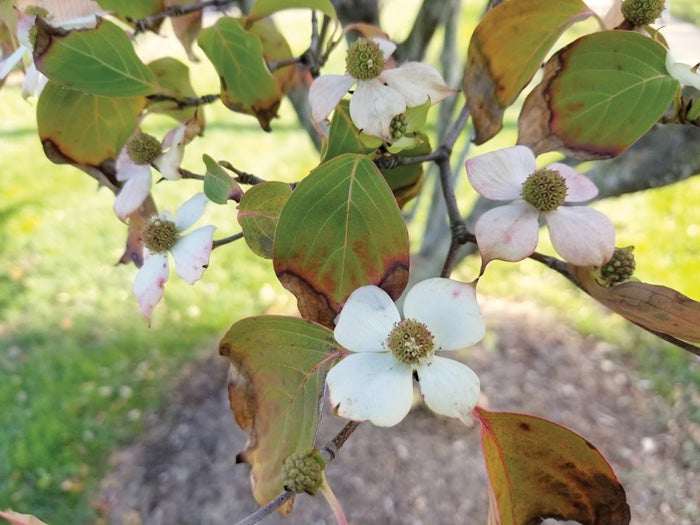What’s going on? Plants blooming out of season
Published 12:00 am Friday, December 1, 2017

- Submitted photo Kousa dogwoods are blooming even while their leaves are turning brown and falling off.
You’re outside raking leaves and you look up and your dogwood is in bloom, and it’s late November. What is going on?
Sometimes nature throws us a curve ball and plant hormones become unbalanced. When this occurs, strange things will happen, such as premature blooms. Unusual weather patterns, drought, cold weather, physical damage, stress will alter plant hormones, especially the flowering hormones within the plant.
Spring-flowering plants such as azaleas, dogwood, rhododendron, etc., often set their buds in late summer. It’s the rationale for home gardeners not to prune these flowering plants past July 4. Unseasonable weather is generally the culprit to our winter blossom preview. Premature blooming may influence the normal bloom period again in the spring. However, it will not be detrimental to growth and development.
Just as hormones are important for growth and development of animals including humans, they are also important for plant growth and development. Biochemical compounds are instrumental in controlling the growth and development in all plants. Produced in very small amounts, plant hormones are synthesized in one place and take effect in another, often in very minute concentrations.
Plants produce a vast array of hormones with varying functions — too many to list here. Plant scientists have discovered they can synthesize these chemicals to alter and change plant growth. For example, auxins are growth hormones produced by plants to promote cell growth stem elongation but may also inhibit growth. Plant scientists have taken this mode of action and developed synthetic herbicides used for controlling lawn weeds.
Flower producers often use growth regulators to keep plants dwarf and compact which is a standard practice on bedding plants in early spring. Growth regulators, or hormones, decrease length on nodes, making plants compact, reducing legginess and producing an attractive, marketable plant.
Flowering plants, including shrubs such as camellias, roses and azaleas often respond to flowering hormones. Some growth regulators that increase flower size and intensity are called gibberellins. Camellia enthusiasts treat buds with gibberellic acid (gibbing camellias) at bud, before flowering, often doubling the normal size of the blooms. This is a common practice in camellia flower shows.
Ethylene is the only known gaseous hormone produced by plants. Usually, it inhibits vegetative growth, reducing leaf area in drought conditions and accelerating fruit ripening and dropping. Ethylene is released by ripe fruit and is used regularly by commercial food handlers to speed the ripening process of tomatoes, apples and bananas.
What these plants need is something we all need — a normal winter and an average summer. Until then, we will continue to see more confused plants around the county.




